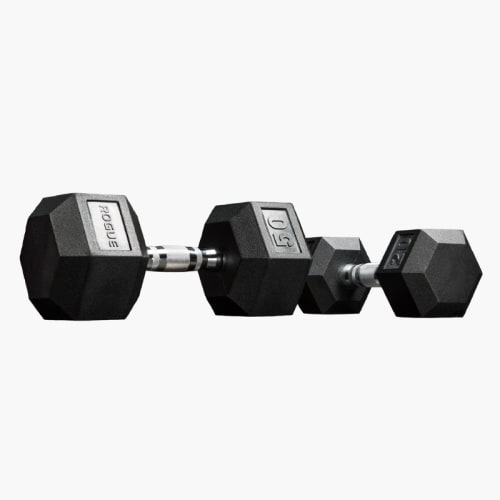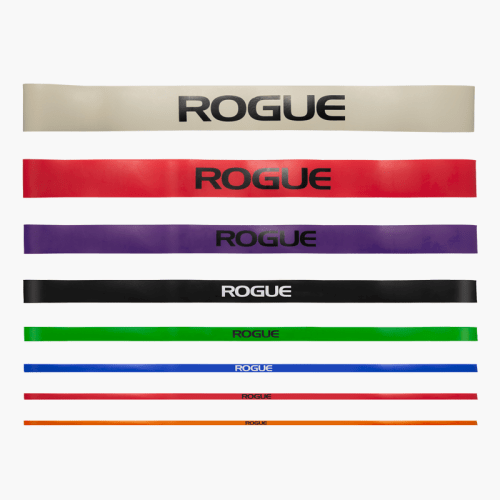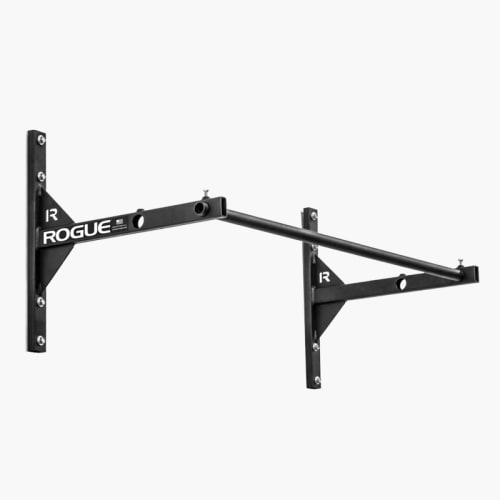The 10 Functional Core Exercises You Should Use In Your Workout
Functional core exercises are a very effective way to progress the core muscles, including the abs. These exercises can be added to your next strength workout or specific abdominal <a href="http://workout.in/">workout</a> . In this article I provide 10 of the most effective functional core exercises but also provide a framework for how to develop your core musculature over the long term.
Get weekly roundups of the best training tools in your inbox, every Monday.
No spam – just thoughtful training advice
- Sample Beginner Functional Core Workout
- What Are Functional Core Workouts?
- Beneficial Equipment For Functional Core Exercises
- Benefits of Functional Core Exercises
- 1. Transfer To Life
- 2. Improve Athletic Performance
- 3. Help With Strength Training
- How Do You Build Functional Core Strength?
- 1. Use a Variety of Movement Patterns
- 2. Use Progressive Overload
- 3. Consider Adaptive Resistance
- 4. Does Functional Core Training Work?
- Sample Functional Core Workout
- Frequently Asked Questions
- Is Functional Core Training Better?
- Does Functional Bodybuilding Include Core Exercise?
- Will Functional Core Exercise Improve My Fitness?
- Can Seniors Perform Functional Core Exercises?
- The 10 Functional Core Exercises You Should Use In Your Workout
- References
If you’re tired of doing sit ups and planks and want to add some more functional core exercises, your in the right place. Using functional core exercises is one of the best ways to ensure you have a strong and robust core thats ready for anything. We have 10 exercises that will transfer extremely well into your day to day life or sport. According to Adaptiv, “The purpose of functional fitness training is to improve your ability to perform your everyday activities.”(1) The same goes for functional core training, using these exercises on a regular basis will allow you to feel better throughout the day.
Sample Beginner Functional Core Workout
Complete 4 rounds
1. Single Arm KB Farmers Carry
2. Deadbugs
3. Half Kneeling Banded Chop
What Are Functional Core Workouts?
The illusory “functional” definition can be hard to pin down. It holds a lot of positive and negative connotations in the strength and conditioning world and rightly so. Functional would mean that the exercises transfer to other areas of life i.e day to day life (picking up kids) and sports. Since the popularity of this term we have seen a lot of people jumping around doing exercises which quite frankly don’t make any sense.
Exercises should have a very clear goal, whether that goal is functional or not is up to interpretation. If muscle mass is a sign of good health markers, then isolation movements like biceps curls should be considered functional in some sense. The idea that having more muscle mass doesn’t transfer into other areas of sport or day to day life is just wrong.
This being said, a programme that’s missing out on other key components of strength and conditioning movement patterns and just incorporating bodybuilding isolation exercises (assuming the programme’s intent isn’t for a bodybuilder) maybe needs the addition of some more traditional “functional” movements.
These traditional functional movements might include animal walks, forms of dynamic rotation, heavy carries and sport specific strength exercises. All of these are excellent exercises and do have a very high transfer to life and sport. These are the style of functional core exercises we have listed below if you feel like your core work isn’t transferring well enough to life or sport.
Beneficial Equipment For Functional Core Exercises
Benefits of Functional Core Exercises
1. Transfer To Life
The key benefit of functional core training is its transfer to day to day life. Functional core training will involve training all the movement patterns within core training, allowing your core to be ready for whatever sport or life throws at you. As we move through our day to day experience we face many different physical movements that we take for granted when we can perform them easily. Training the core will be extremely beneficial to your ability to perform daily tasks with precision and control without even noticing that you are doing so.
2. Improve Athletic Performance
In sport we see a lot or dynamic and organic movements that these functional core movements will be perfect to improve your balance and your stability to enable you to deal with these types of movements. This is especially true of contact sports, like judo or rugby. A strong, well rounded core strength will be crucial to dominating opponents in these sporting endeavours.
3. Help With Strength Training
Not only will functional core exercises help you in sport and day to day life, they will also help you perform better in the weight room, especially if you are doing more functional weight training with KB’s and barbells. These pieces of equipment require a lot of core bracing to be performed correctly, these functional core exercises will help you gain the strength required to perform these movements to a high level of quality. Our core strength is crucial to perform exercises like deadlifts, backs squats, so building a strong and robust core is essential for success in the weight room.
How Do You Build Functional Core Strength?
1. Use a Variety of Movement Patterns
In order to have a truly functional core, you need to make sure you use your entire core in your training. This will involve training the four key movement patterns of the core, resisting lateral flexion, rotation , resisting rotation , anterior core .
2. Use Progressive Overload
“The principle of progressive overload must be adhered to for individuals to continually increase muscle size with resistance training.” (2)
Progressive overload involves adding difficulty over time through adding volume or intensity. An example might be adding 5 seconds to hollow hold or adding weight to a landmine full contact twists. This is a great way to ensure you’re seeing progress in all forms of your resistance training.
3. Consider Adaptive Resistance
Adaptive resistance is when you have “used up” an exercise and you’re not getting enough adaptation from it anymore. This may involve using an exercise for 6 weeks and progressing it each time, you may get used to doing it or can’t progress it any further, so you switch it out for a different movement. This is also based on personal preference, when you change the exercise can also be when you are bored of performing it and feel like you want to change up your routine. Personally I like working in 6-8 week training blocks while others prefer 3-4 weeks, its about whats finding right for you.
4. Does Functional Core Training Work?
Yes. You just need to be patient and use all the correct principles of strength and conditioning and you’ll be able to see great progress using functional core training.
Sample Functional Core Workout
Complete 4 rounds
1. Single Arm KB Farmers Carry
2. TRX Pike
3. Inchworm to Hollow
Frequently Asked Questions
Is Functional Core Training Better?
No. Better is hard to define, better than what, better than non-functional core exercises? If an exercise improves your core strength, then it has a function. Using a wide variety of exercises will be to your advantage rather than just focusing on exercises you consider functional. All effective core exercise will create a positive stimulus on the muscles and body.
Does Functional Bodybuilding Include Core Exercise?
Yes, typically functional body building, popularised by Marcus Filly and Opex Training includes core training. Every different coach will have their own interpretation of what functional body building is so programmes will differ, but the majority of these training programmes will include core exercises.
Will Functional Core Exercise Improve My Fitness?
Again this depends on your definition of fitness, if you mean your 10k running time then no, but if you mean your bodies general ability to deal with day to day life then yes. Fitness in terms of Crossfit will also likely be improved.
Can Seniors Perform Functional Core Exercises?
Yes, core strength is crucial for seniors and should be developed alongside all the other movement patterns. However the majority of these exercises will be too challenging for the vast majority of seniors, for that reason I have provided two core exercises perfect for seniors.
Buy a Rack ↗
The 10 Functional Core Exercises You Should Use In Your Workout
Buy Kettlebells ↗
The single arm farmers carry is one of my go to functional core exercises for both my advanced and beginner clients due to both its simplicity and effectiveness at developing the resisting lateral flexion movement pattern.
The side plank with reach through is a perfect exercise for beginners and intermediates to challenge their obliques and core musculature in general. Maintaining balance throughout this exercise can be very challenging for beginners, so ensure that you are moving slowly with control, if you rush this exercise you take away the time under tension which is crucial to creating an adaptation.
Buy Bands ↗
Banded deadbug pulses are an excellent way to make the traditional deadbug exercises far more difficult. This exercises will be slightly too difficult for beginners as the deadbug position can already be very challenging, not in the physical sense but in the sense that maintaining the correct technique can be too difficult.
The bear crawl is another functional animal walk variation that requires a great deal of core stability to perform correctly. When the hips are kept low as well as the knees, the abdominals are heavily engaged, but it also requires activity from the full body, from the upper-body to the ankles, making it a very functional exercise.
Buy Bands ↗
The half kneeling banded chop is the first resisting rotation core exercise we see in the list, this is a crucial core movement pattern to progress overtime and will enable you to build a strong well rounded core musculature. Dynamic exercises for the core are often missed out of traditional training programmes so ensure you are adding them into your regime. The eccentric part of this exercise is key to getting the most out of performing this exercise, make sure you take your time when your coming back to the starting position and really resisting against the band as it pulls on your core musculature.
Buy Landmines ↗
The landmine full contact twist is one of the most challenging core exercises in our library and should only be reserved for those who are advanced in the weight room. Although it is very challenging, that is what makes it so effective, it transitions directly too so many sporting movements and will help in so many organic daily situations. If your looking for a challenging functional core exercise to add to your workout routine, I highly recommend the landmine full contact twist.
Buy Sliders ↗
The straddle compression walks with sliders are a great way to improve both your core stability and hip mobility at the same time. This is a very challenging exercise for those who have tight hips and hamstrings, even if you have a very strong core musculature. The emphasis needs to be put on keeping the legs straight and pull with the core to lift the hips. For coaches, avoid using this exercise with individuals who are overweight as it can be very challenging and demotivating.
Buy a TRX ↗
The TRX Pike is challenging for both the upper body and the core musculature. This exercise can be done by intermediate to advanced individuals and the intensity can easily be modulated by the changing height to which the hips are lifted from the floor. It can also be made very challenging for advanced individuals by pausing at the top of the rep and squeezing the abdominals.
The inchworm to hollow is one of my favourite exercises to challenge my more advanced clients. It takes a relatively easy core exercises, the walk out, and turns it into an extremely challenging functional core exercise. In order to make it challenging it needs to be performed with precision and control, taking small steps and pausing at the end to really feel the effect of the position.
Buy Dumbbells ↗
The dumbbell full moon is probably the most niche exercise in this list, and it is very rarely seen in traditional gyms. I discovered this exercise from Catalyst Athletics exercise library whilst I was training predominantly for weightlifting (as a side note, if your interested in weightlifting I could not recommend this site enough) and loved it, it is very different from all other carries and more static resisting rotation exercises that I had used previously, it pulls aggressively on so many different parts of the core musculature. Make sure you start with a weight you find approachable and progress it over time.
References
If you enjoyed this resource you can find more below or try Programme, a fitness app that plans every workout for you – based on your progress, equipment and lifestyle.
This resource was written by Sean Klein. Sean Richard Klein has thousands of hours of coaching experience and a BSc in Sports Science with Management from Loughborough University. He owns a gym in Bayonne France, CrossFit Essor, which runs group classes and a Personal training studio.
Sean Klein




